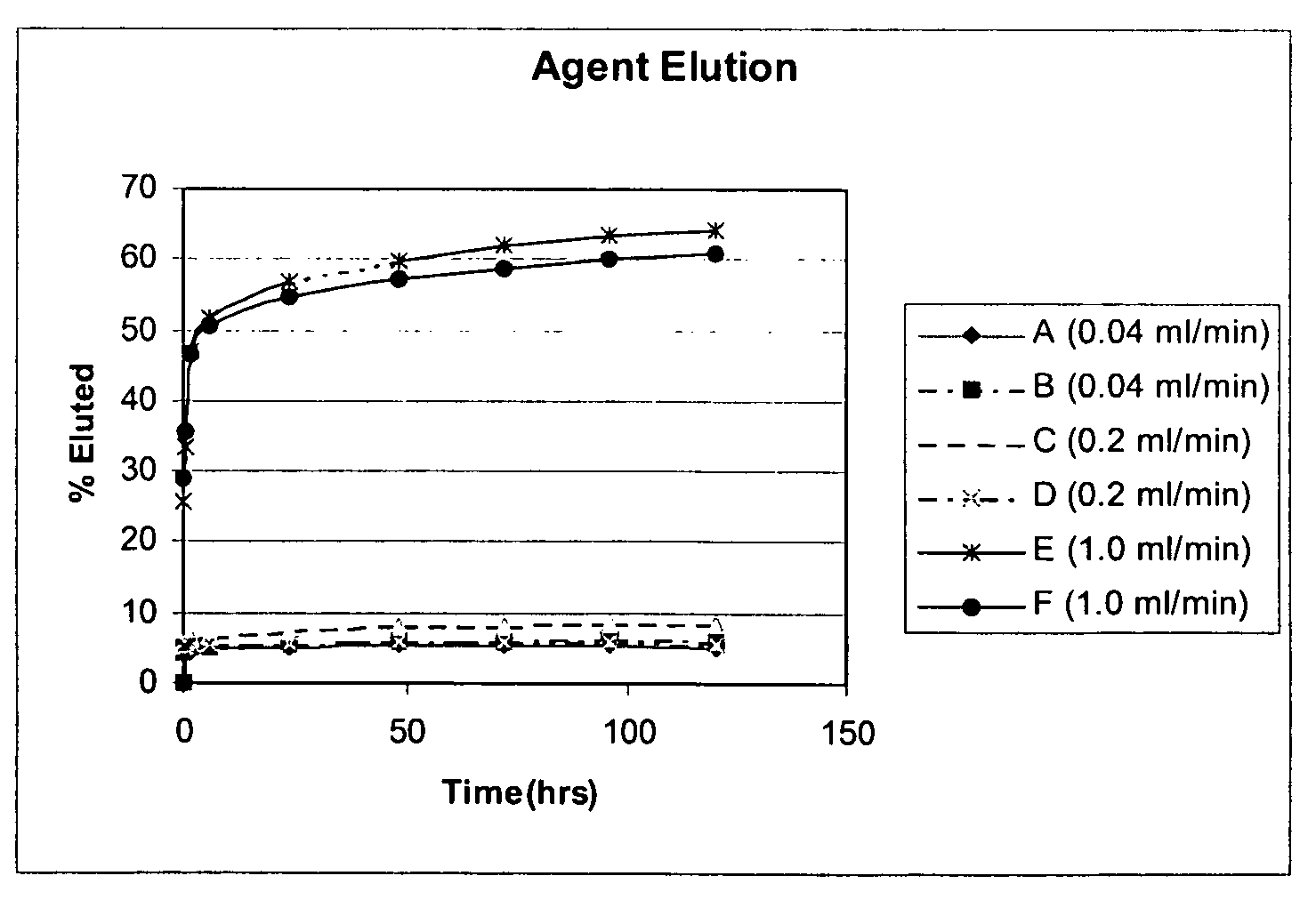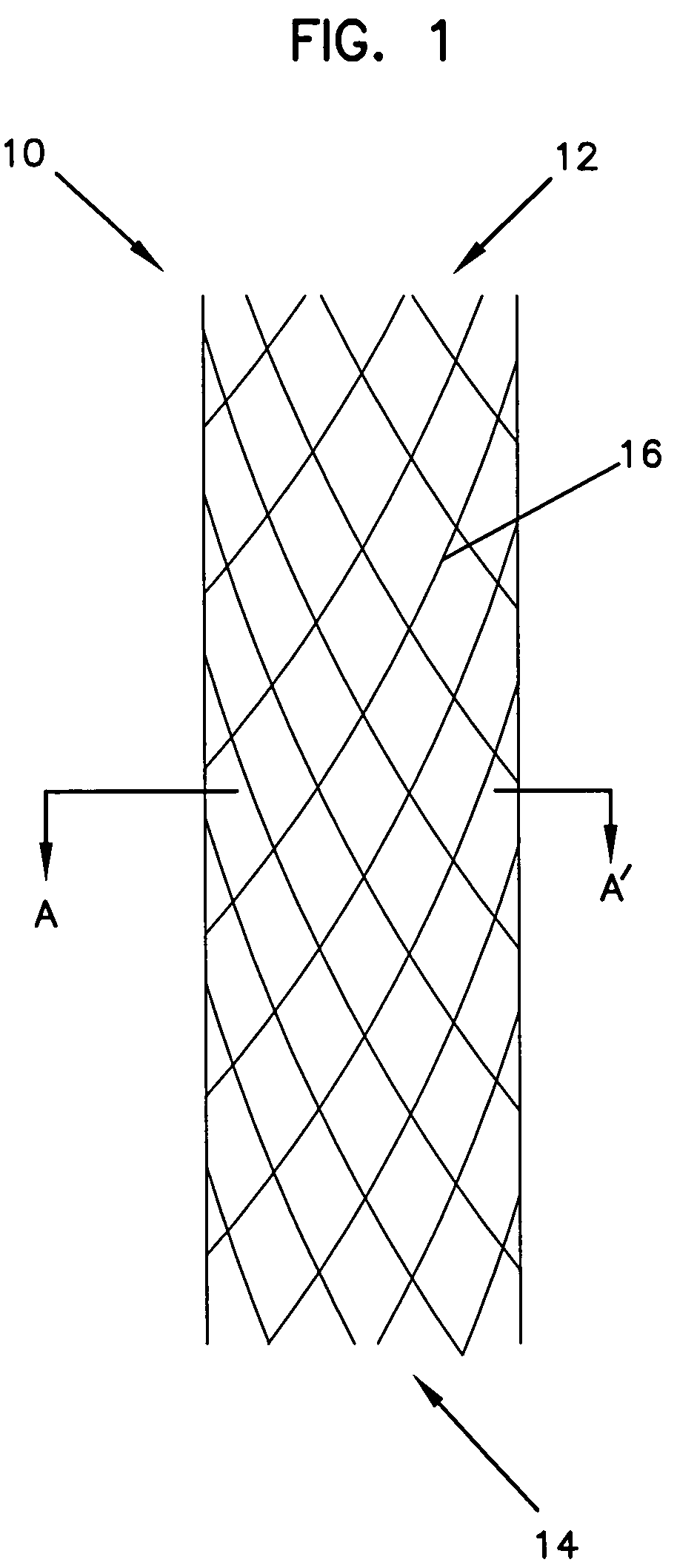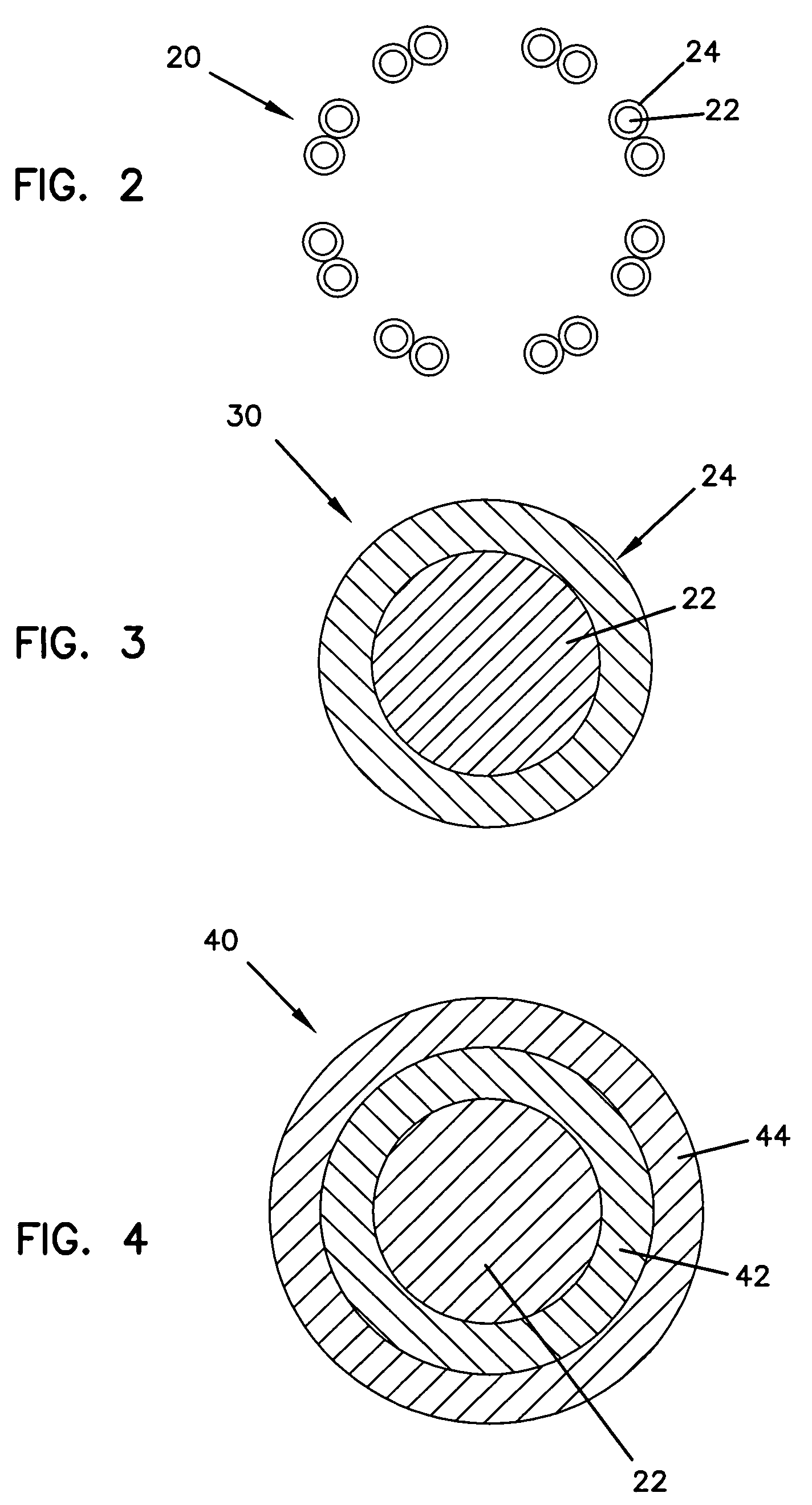Methods, devices, and coatings for controlled active agent release
a technology of controlled active agents and coatings, applied in the direction of prosthesis, pharmaceutical packaging, packaging, etc., can solve the problems of too little and too much of an active agent that is dosed to a particular tissu
- Summary
- Abstract
- Description
- Claims
- Application Information
AI Technical Summary
Benefits of technology
Problems solved by technology
Method used
Image
Examples
example 1
Modifying Predetermined Release of Triamcinolone Acetonide by Varying Deposition Rate
[0105]A coating solution was prepared for deposition of an active agent, triamcinolone acetonide (TA) onto curved pieces of a metal alloy wire. TA was obtained from Pfizer Inc., (New York, N.Y.). The solution was comprised of 30 mg / ml TA, 6 mg / ml poly(ethylene-co-vinyl acetate) (PEVA) (MW 75 kD, 33% vinyl acetate), and 24 mg / ml poly(n-butyl methacrylate) (pBMA) (MW 250 kD) dissolved in tetrahydrofuran (THF). The solution was applied to two wire pieces (samples A and B) using an ultra sonic spray deposition method at a relative humidity of 10% and at a flow rate of 0.05 ml / minute. Then the solution was applied to another two wire pieces (sample C and D) using an ultra sonic spray deposition method at a relative humidity of 10% and at a flow rate of 0.08 ml / minute.
[0106]In vitro agent elution studies were completed to study the elution rate and recovery of TA from the coated pieces of wire. The pieces...
example 2
Modifying Predetermined Release of Triamcinolone Acetonide Over an Extended Period Time
[0109]A coating solution was prepared for deposition of an active agent, triamcinolone acetonide (TA) onto curved pieces of metal alloy wire. TA was obtained from Pfizer Inc., (New York, N.Y.). The solution was comprised of 30 mg / ml TA, 6 mg / ml poly(ethylene-co-vinyl acetate) (PEVA) (MW 75 kD, 33% vinyl acetate), and 24 mg / ml poly(n-butyl methacrylate) (PBMA) (MW 250 kD) dissolved in THF. The solution was applied to one piece of wire (sample E) using an ultra sonic spray deposition method at a relative humidity of 10% and at a flow rate of 0.05 ml / minute, such that 972 μg of solids were deposited. Then the solution was applied to another piece of wire (sample F) using an ultra sonic spray deposition method at a relative humidity of 10% and at a flow rate of 0.08 ml / minute, such that 964 μg of solids were deposited.
[0110]In vitro agent elution studies were completed to study the elution rate and re...
example 3
Modifying Predetermined Release of Dexamethasone by Varying Deposition Rate
[0113]A coating solution was prepared for deposition of an active agent, dexamethasone (Dex) onto metal coupons. Dex was obtained from Sigma-Aldrich (St. Louis Mo.). The solution was comprised of 10 mg / ml Dex, 10 mg / ml poly(ethylene-co-vinyl acetate) (pEVA) (MW 75 kD, 33% vinyl acetate), and 10 mg / ml poly(n-butyl methacrylate) (PBMA) (MW 250 kD) dissolved in a solvent of 80% vol. chloroform and 20% vol. methanol. The solution was applied to one side of six 8 mm×15 mm stainless steel (316 stainless steel) coupons (A-F) using an ultra sonic spray deposition method at a relative humidity of 30% and at varying flow rates as shown below in Table 3. Total solids deposited onto the coupons were as follows: A—1506 μg; B—1515 μg; C—1848 μg; D—1773 μg; E—1371 μg; F—1332 μg.
[0114]In vitro agent elution studies were completed to study the elution rate and recovery of Dex from the coated coupons. Elution was measured usin...
PUM
| Property | Measurement | Unit |
|---|---|---|
| molecular weight | aaaaa | aaaaa |
| molecular weight | aaaaa | aaaaa |
| molecular weight | aaaaa | aaaaa |
Abstract
Description
Claims
Application Information
 Login to View More
Login to View More - R&D
- Intellectual Property
- Life Sciences
- Materials
- Tech Scout
- Unparalleled Data Quality
- Higher Quality Content
- 60% Fewer Hallucinations
Browse by: Latest US Patents, China's latest patents, Technical Efficacy Thesaurus, Application Domain, Technology Topic, Popular Technical Reports.
© 2025 PatSnap. All rights reserved.Legal|Privacy policy|Modern Slavery Act Transparency Statement|Sitemap|About US| Contact US: help@patsnap.com



